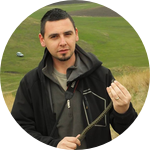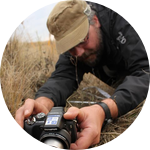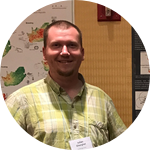About This Project
I want to study how Common Wall Lizards disperse using man made structures (roads and railways), helped by habitat suitability and connectivity models, and field surveys. These results will give further insight on how species respond to the presence of roads and rails, and use them to expand their own territories.
Ask the Scientists
Join The DiscussionWhat is the context of this research?
Due to habitat fragmentation, many species have already gone extinct and many other are at the brink of extinction across the world. In many cases anthropogenic features (such as roads and railways) that lead to habitat fragmentation which is a main cause for population declines across many species. Other species however, are more anthropofilic and appear to benefit from the presence of roads and railways and even use them to expand their own range. Railroads are perhaps the best example of a man made feature that is used in this way. Common Wall Lizards use railway lines to colonize new territories, but we don't know how wide spread this phenomena is across their range.
What is the significance of this project?
Our previous work (which can be read here) suggests that Common Wall Lizards use railway lines to colonize new territories. However, the extent to which this is a wide process is poorly understood and needs further investigation. The results of this work will give significant insight on how species respond to man made structures, especially in context of animals with relatively limited dispersal abilities (such as lizards).
What are the goals of the project?
We aim to (i) model the habitat suitability of the Common Wall Lizard in its northeastern range limit using mathematical modeling (see in Methods); (ii) test whether the Common Wall Lizard expanded its range using anthropogenic features (such as railroads and roads) or natural corridors (such as along rivers) using mathematical modeling and field survey's (see Methods); and (iii) make a general prediction of possible routes of migration to other suitable habitats by using the observed corridors and calculating the landscape connectivity between known populations and suitable habitats.
Budget
Up to this year, this project was partially funded by another small grant program, however, I would like to continue the research and collect another year of data and in order to successfully complete it I would need 350$ for transportation (gas), ethanol for storing samples during 2017 field season, and a GPS (an Garmin eTrex 20) for collecting way-points for every lizard found and loading custom maps (the habitat suitability maps) on the GPS.
Endorsed by
Meet the Team
Iulian Gherghel
I am a PhD Student in the Department of Biology at Case Western Reserve University. I am a trained ecologist and herpetologist, with research interests in amphibian and reptile diversity, community ecology, and I have a strong statistical background. In the past 10 years I worked in Eastern Europe, Northern Africa, and North America studying the field factors that influence amphibian and reptile distributions at multiple scales using field observations, and geographical information systems (GIS). So far, I have authored or coauthored over 50 publications on amphibian and reptile distributions, ecology, and conservation in international and national herpetology, ecology and zoology journals. I also routinely attend scientific conferences (nearly 30 presentations to date), where I present my findings and establish connections with my peers in the field. For more information, please visit my website.
Project Backers
- 2Backers
- 5%Funded
- $25Total Donations
- $12.50Average Donation



